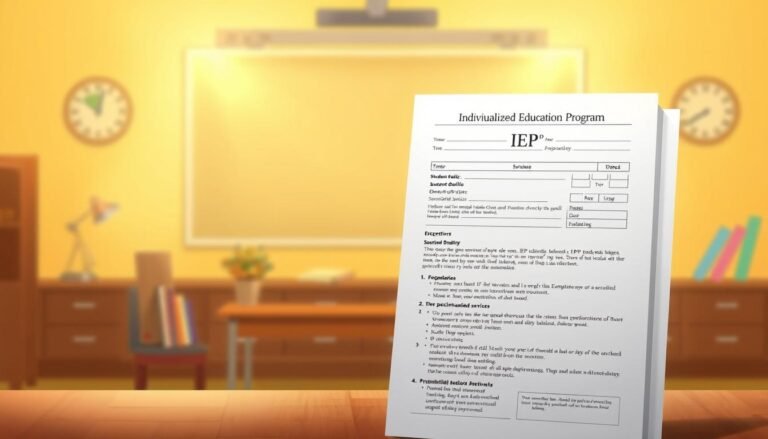
From Confusion to Clarity: Communicating with Your Child About Learning Disabilities – The Essential Guide
Introduction
Navigating the world of learning disabilities can often feel like traversing a dense forest—confusing, overwhelming, and fraught with challenges. You’re not alone in feeling lost; many parents share this sentiment. However, transforming that confusion into clarity is not just hopeful—it’s essential for fostering understanding and empowerment in your child. From Confusion to Clarity: Communicating with Your Child About Learning Disabilities offers a roadmap that equips you with the tools, insights, and strategies to engage in meaningful conversations with your child, ensuring they don’t just survive but thrive.
Understanding Learning Disabilities
What Are Learning Disabilities?
Learning disabilities (LD) encompass a variety of disorders that affect how individuals process information. These can manifest in difficulties with reading, writing, math, or other cognitive functions. The National Center for Learning Disabilities estimates that approximately 1 in 5 children has a learning disability, making this a widespread issue.
| Learning Disability | Description | Common Symptoms |
|---|---|---|
| Dyslexia | Difficulty with reading and language processing | Trouble with reading fluency, decoding, and vocabulary |
| Dysgraphia | Challenges with writing | Poor handwriting, difficulty expressing ideas in writing |
| Dyscalculia | Difficulty with math | Struggles with number sense, counting, and calculation |
| ADHD | Attention deficit that affects focus and self-control | Impulsivity, difficulty organizing tasks, and maintaining attention |
The Impact of Learning Disabilities on Children
Children with learning disabilities often face social, emotional, and academic hurdles. They may be more prone to feelings of frustration, lower self-esteem, or even anxiety. Understanding these challenges is a crucial aspect of From Confusion to Clarity: Communicating with Your Child About Learning Disabilities.
Building a Foundation for Communication
Creating an Open Dialogue
Fostering open communication is vital when discussing learning disabilities with your child. Here are some effective strategies:
- Set Aside Time: Find moments when you are both relaxed and undistracted.
- Use Age-Appropriate Language: Tailor your conversation according to your child’s age and comprehension level.
- Encourage Questions: Invite them to express their feelings and thoughts, making it clear that no question is too silly or off-limits.
Identifying Your Child’s Learning Style
To communicate effectively, it’s essential to understand how your child learns best. Each child may have a unique learning style—be it visual, auditory, or kinesthetic. This awareness can dramatically enhance how you explain concepts related to their learning disabilities.
Case Study Analysis: The Impact of Learning Styles
Consider the example of a 10-year-old boy named Liam. Diagnosed with dyslexia, he struggled with reading but excelled in hands-on activities. His mother realized that by incorporating visuals and interactive methods, she could help Liam grasp reading concepts more effectively.
- Relevance: This case illustrates how acknowledging a child’s learning style can lead to more effective communication and understanding.
Explaining Learning Disabilities to Your Child
What to Say and How to Say It
When discussing learning disabilities, simplicity and honesty are key. Here’s how to approach the conversation:
- Start with Basics: Explain that learning disabilities are not a reflection of intelligence but rather how the brain processes information.
- Share Personal Stories: Relate instances where you faced challenges, reinforcing that everyone struggles at times.
- Normalize the Conversation: Frame learning disabilities as a common experience, contrasting it with physical disabilities to instill understanding.
Engaging Activities for Clarity
Hands-on activities can be incredibly beneficial in reinforcing conversations about learning disabilities.
| Activity | Purpose | Execution |
|---|---|---|
| Story Time | Foster understanding | Read books featuring characters with learning disabilities |
| Creative Arts | Explore feelings | Encourage drawing or crafting to express emotions around learning |
| Role Play | Practice dialogue | Act out scenarios discussing challenges and successes |
Emphasizing Positive Perspectives
Frame Learning Disabilities as Strengths
Communicating from a strength-based perspective empowers your child. Recognize that many individuals with learning disabilities possess unique skills, creativity, and resilience.
Case Study: The Artist
Take Sarah, a high school girl with dysgraphia. Though writing posed challenges, her gift for visual arts shone brightly. Her parents highlighted her artistic talents, encouraging Sarah to pursue art therapy as a way of expression.
- Relevance: Showcasing how strengths can blossom amidst challenges serves as an inspiring model for children facing similar hurdles.
Inspire Resilience and Coping Skills
Education about coping strategies is essential for handling the emotional effects of learning disabilities. Some effective strategies include:
- Mindfulness Techniques: Teach relaxation exercises to help manage frustration.
- Goal Setting: Involve your child in small, achievable objectives relevant to their learning journey.
Collaboration with Educators
Building a Support Network
Collaboration with teachers and special education staff can provide valuable resources and insights. Engaging in regular meetings ensures consistency between home and school approaches.
Case Study: The Team Approach
Consider a mother, Clara, who advocated for her son’s learning plan with educators. Working together, they adapted classroom strategies that conformed to David’s learning needs. This collaborative effort in developing tailored learning goals led to his improved academic performance.
- Relevance: Clara’s proactive involvement highlights the significance of creating a supportive support network that includes educators, fostering clarity.
Communicating with Teachers
Here are effective ways to communicate with your child’s teachers:
- Keep a Record: Document specific examples of progress or challenges.
- Schedule Regular Check-Ins: Establish ongoing dialog opportunities beyond parent-teacher conferences.
- Share Resources: Provide teachers with insights into effective strategies that have worked at home.
Embracing Emotional and Social Dimensions
Addressing Emotional Challenges
Children with learning disabilities often experience emotions ranging from frustration to shame. Exploring these feelings creates a safe environment for your child to express their thoughts.
Case Study: Group Therapy
A school implemented group therapy sessions for students with learning disabilities, encouraging sharing and bonding. This avenue allowed children to articulate their experiences while obtaining peer support.
- Relevance: Such communal activities foster emotional connection, reducing feelings of isolation.
Reinforcing Social Skills
Beyond academics, teaching social skills is paramount for children with learning disabilities. Encourage opportunities for social engagement, providing scenarios to practice communication and team dynamics.
Creating a Resource Toolkit
Compiling Helpful Tools
Gathering the right resources can significantly aid in understanding and supporting your child. Consider:
- Books: Curate a list of age-appropriate books discussing learning disabilities.
- Websites: Share trusted online resources for both parents and children.
- Apps: Explore educational apps designed to aid children with varying learning needs.
Creating an Actionable Plan
Developing an actionable plan helps maintain focus on goals:
| Goal | TSM (Time, Support, Motivation) | Follow-Up |
|---|---|---|
| Improve reading skills | 20 minutes daily with visual aids | Weekly check-ins to assess progress |
| Enhance social engagement | Encourage participation in clubs | Monthly review of experiences |
Conclusion
Navigating learning disabilities doesn’t have to be a journey filled with confusion. By transforming your approach from confusion to clarity in communicating with your child, you not only equip them with crucial coping skills but also instill a sense of security and hope. The road may not always be easy, but by embracing understanding, resilience, and positivity, you’ll be able to empower your child to thrive.
Actionable Insights
As you embark on this enlightening journey:
- Stay Informed: Educate yourself about various learning disabilities.
- Listen and Adapt: Tailor communication according to your child’s evolving needs.
- Celebrate Progress: Acknowledge every achievement, no matter how small.
Your role is pivotal. Be the guiding light that helps your child navigate challenges and discover their unique potential.
FAQs
1. What are some signs my child might have a learning disability?
Look for struggles in reading, writing, or math relative to peers, persistent trouble following instructions, or a noticeable gap between potential and performance.
2. How can I find the right educational support for my child?
Consult educational psychologists, teachers, or special education consultants to evaluate your child’s needs and suggest tailored interventions.
3. Is my child’s learning disability hereditary?
While genetics can play a role, environmental factors, teaching methods, and individual experiences also significantly influence learning disabilities.
4. How can I advocate for my child at school?
Be proactive by attending meetings with educators, communicating regularly, and collaborating on individualized education plans (IEPs) tailored to your child’s needs.
5. What can I do to help my child with homework?
Establish a quiet and organized workspace, break assignments into manageable tasks, and utilize learning aids that align with your child’s learning style.
By embracing a proactive approach to communication, you transform what may seem overwhelming into a supportive foundation for your child’s journey. Together, let’s turn confusion into clarity—one conversation at a time.
















